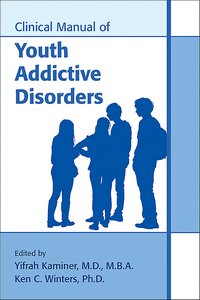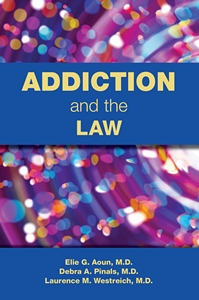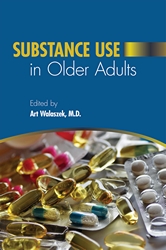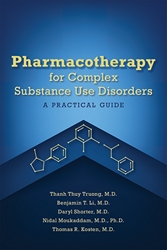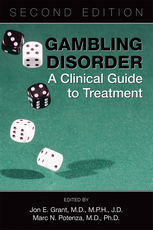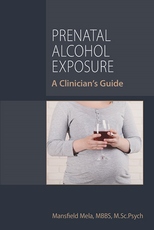Clinical Manual of Youth Addictive Disorders
View Pricing
Description
This long-awaited follow-up to the classic text Clinical Manual of Adolescent Substance Abuse Treatment presents the latest research on substance use and substance use disorders (SUDs) in adolescents 12–18 and emerging adults 18–25 years of age. This new manual offers a substantive update of the previous manual's 16 chapters, offering 7 additional chapters devoted to important new topics, such as pediatric primary care assessment and intervention, electronic tools, specific substances (e.g., cannabis, opioids, alcohol), and much more. Psychiatrists, psychologists, social workers, and substance abuse specialists, as well as applied researchers and public health professionals, will find this new manual a research-rich and clinically compelling resource for understanding disease course, prevention, diagnosis, substance-specific interventions, co-occurring disorders, and issues related to special populations.
The strengths of this text, edited by two of the foremost experts on addiction among youth, are many:
- Because youth are not simply miniature adults, the book uses a developmentally informed approach to understand the onset of substance use and the trajectory to SUD and behavioral addictive disorders.
- An extensive section of the book is devoted to epidemiology, diagnosis, and interventions for specific substances of abuse, including alcohol, tobacco, cannabis, and opioids. The full range of interventions are described for each, including pharmacotherapy, cognitive-behavior therapy, motivational enhancement, and psychosocial strategies.
- An introduction on the nature of the association between co-occurring disorders is followed by chapters on internalizing disorders (such as depression), suicidal behavior, psychotic disorders, externalizing disorders (such as attention-deficit/hyperactivity), and behavioral addictions
- Special chapters are devoted to the management of youth with SUDs in the juvenile justice system and the consequences, for the child, of maternal substance use during pregnancy. Advances in research and clinical strategies make both topics timely.
- Three appendixes complete the book. The first offers resources for screening and assessment tools, the second provides a select list of websites for parents who are seeking advice and resources about drug prevention and intervention, and the third lists websites containing general information about self-help, including how to find local AA or NA meetings.
Emerging research on developmental psychopathology and adolescent development has implications for how we view current prevention, intervention, and treatment paradigms, and Clinical Manual of Youth Addictive Disorders is indispensable in helping the reader understand and implement effective strategies for these patients and their families.
Contents
- Preface
Part 1. Course, Prevention, and Pretreatment Considerations
- Chapter 1. Diagnosis, Epidemiology, and Course of Youth Substance Use and Substance Use Disorders
- Chapter 2. Prevention of Substance Use and Substance Use Disorders
- Chapter 3. Screening and Assessing Youth With Substance Use Disorders
- Chapter 4. Primary Care and Pediatric Settings: Screening, Brief Intervention, and Referral to Treatment (SBIRT)
- Chapter 5. Bioassays and Detection of Substances of Abuse in Youth
- Chapter 6. Placement Criteria and Integrated Treatment Services for Youth With Substance Use Disorders
Part 2. Description, Diagnosis, and Interventions for Specific Substances of Abuse
- Chapter 7. Youth Alcohol Use
- Chapter 8. Youth Tobacco Use
- Chapter 9. Youth Cannabis Use
- Chapter 10. Youth Opioid Use
- Chapter 11. Youth Club, Prescription, and Over-the-Counter Drug Use
Part 3. Specific Interventions for Youth With Substance Use Disorders
- Chapter 12. Continuity of Care for Abstinence and Harm Reduction
- Chapter 13. Brief Motivational Interventions, Cognitive-Behavioral Therapy, and Contingency Management
- Chapter 14. Family and Community-Based Therapies
- Chapter 15. Twelve-Step and Mutual-Help Programs
- Chapter 16. Electronic Tools and Resources for Assessing and Treating Youth Substance Use Disorders
Part 4. Co-occurring Disorders in Youth
- Chapter 17. Assessment and Treatment of Co-occurring Internalizing Disorders: Depression, Anxiety Disorders, and PTSD
- Chapter 18. Assessment and Treatment of Co-occurring Suicidal Behavior
- Chapter 19. Assessment and Treatment of Comorbid Psychotic Disorders: Bipolar Disorder, Schizophrenia, and Drug-Induced Psychotic Disorders
- Chapter 20. Assessment and Treatment of Co-occurring Externalizing Disorders: Attention-Deficit/Hyperactivity Disorder and Disruptive Behavior Disorders
- Chapter 21. Behavioral Addictions: Gambling Disorder and Internet Gaming Disorder
Part 5. Special Populations
- Chapter 22. Management of Youth With Substance Use Disorders in the Juvenile Justice System
- Chapter 23. Maternal Substance Use in Pregnancy
- Appendix A. Resource Materials on Screening and Assessment Instruments
- Appendix B. Parent Resources on Adolescent Substance Use
- Appendix C. Websites for Self-Help and Mutual Help Organizations
- Index
Contributors
- Alexandra W. Abry, B.A.
Albert J. Arias, M.D.
Kara S. Bagot, M.D.
Molly Bobek, L.C.S.W.
Andria M. Botzet, M.A.
Oscar G. Bukstein, M.D., M.P.H.
Ryan W. Carpenter, Ph.D.
Richard Catalano, Ph.D.
Tammy Chung, Ph.D.
John F. Curry, Ph.D.
Jeffrey Derevensky, Ph.D.
Tess K. Drazdowski, Ph.D.
Nilofar Fallah-Sohy, B.S.
Luis C. Farhat, M.D.
Daphna Finn, M.D.
Marc Fishman, M.D.
Mark D. Godley, Ph.D.
Susan H. Godley, Rh.D.
David B. Goldston, Ph.D.
Rachel Gonzales-Castaneda, Ph.D., M.P.H.
Christopher J. Hammond, M.D., Ph.D.
Sion K. Harris, Ph.D.
Areej Hassan, M.D., M.P.H.
Brian Hendrickson, M.D.
Aaron Hogue, Ph.D.
Christian Hopfer, M.D.
Martha J. Ignaszewski, M.D.
Amy M. Johnson, M.D., F.A.C.O.G.
Yifrah Kaminer, M.D., M.B.A.
John F. Kelly, Ph.D.
John Rogers Knight, M.D.
Grace Kong, Ph.D.
Suchitra Krishnan-Sarin, Ph.D.
Kyle C. McCarthy, M.S.
Kimberly H. McManama O'Brien, Ph.D., L.I.C.S.W.
Robert Milin, M.D., F.R.C.P.C.
Robert Miranda Jr., Ph.D.
K.A.H. Mirza, M.B., F.R.C.P.C.
Gerald Montano, D.O.
Shavon Moore, M.D.
Marc N. Potenza, M.D., Ph.D.
Michelle Roley-Roberts, Ph.D.
Lawrence M. Scheier, Ph.D.
Desiree Shapiro, M.D.
Ashli J. Sheidow, Ph.D.
Anthony Spirito, Ph.D., A.B.P.P.
Randy Stinchfield, Ph.D.
Briana Thrasher, B.A.
Christian Thurstone, M.D.
Courtney Townsel, M.D., M.Sc., F.A.C.O.G.
Angela M. Tunno, Ph.D.
Wendy Welch, M.D., C.P.E.
Karen C. Wells, Ph.D.
Charles Albert Whitmore, M.D., M.P.H.
Ken C. Winters, Ph.D.
Kristyn Zajac, Ph.D.
About the Authors
Yifrah Kaminer, M.D., M.B.A., is Professor of Psychiatry and Pediatrics, Alcohol Research Center and Injury Prevention Center, at the University of Connecticut School of Medicine in Farmington, Connecticut.
Ken Winters, Ph.D., is Senior Scientist at the Oregon Research Institute (Minnesota Location) in Falcon Heights, Minnesota.
Related Products
Carousel Control - items will scroll by tabbing through them, otherwise arrows can be used to scroll one item at a time
